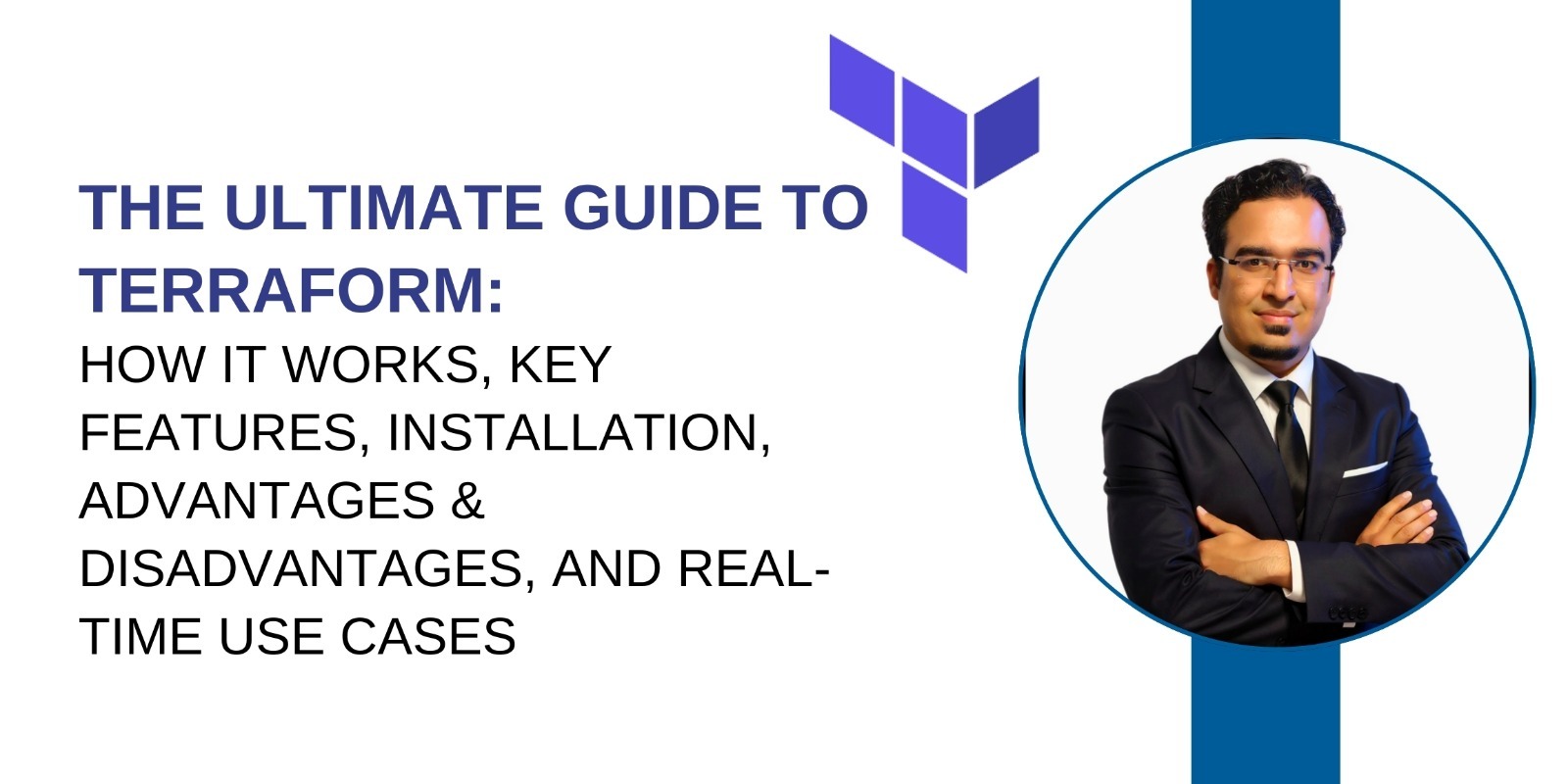There are no items in your cart
Add More
Add More
| Item Details | Price | ||
|---|---|---|---|


In modern DevOps and cloud-native environments, managing infrastructure manually can be error-prone, slow, and inconsistent. That’s where Terraform comes in. It’s one of the most popular Infrastructure as Code (IaC) tools used by DevOps engineers and cloud architects to automate, provision, and manage infrastructure efficiently.
Whether you are new to Terraform or looking to strengthen your DevOps toolkit, this guide covers everything you need to know—from basics to advanced real-time use cases .
What is Terraform?
Terraform uses a declarative approach, meaning you describe the desired infrastructure, and Terraform figures out the steps to achieve it automatically.
Key Workflow:
.tf files using HCL (HashiCorp Configuration Language). terraform init to set up the working directory, download required providers, and prepare Terraform for execution. terraform plan shows what actions Terraform will perform to match your configuration with the real infrastructure, helping prevent mistakes. terraform apply provisions or updates resources according to the plan, creating the desired infrastructure automatically. terraform destroy removes resources that are no longer needed, cleaning up infrastructure safely.terraform.tfstate) of all the resources it manages. This helps Terraform know what exists, track changes, and avoid mistakes when updating infrastructure. init – start a project plan – see what changes Terraform will make apply – create or update resources destroy – remove resourceswhat terraform used for
terraform plan shows exactly what changes Terraform will make before applying them, helping avoid mistakes in production.On Linux (Ubuntu/Debian)
terraform.tfstate) can become complicated in large-scale deployments with many resources. If you’re building your DevOps career in 2025, mastering Terraform is a must-have skill for any cloud or infrastructure-focused professional.
"DevOps is the union of people, processes, and products to enable continuous delivery of value to our end users." - Donovan Brown
Ayushman Sen is a DevOps Engineer at CloudDevOpsHub with a passion for cloud technologies and automation. He enjoys writing blogs to share his DevOps knowledge and insights with the community. A true DevOps enthusiast, Ayushman is also passionate about traveling, listening to music, and playing musical instruments.

Ayushman Sen
DevOps Engineer at CloudDevOpsHub